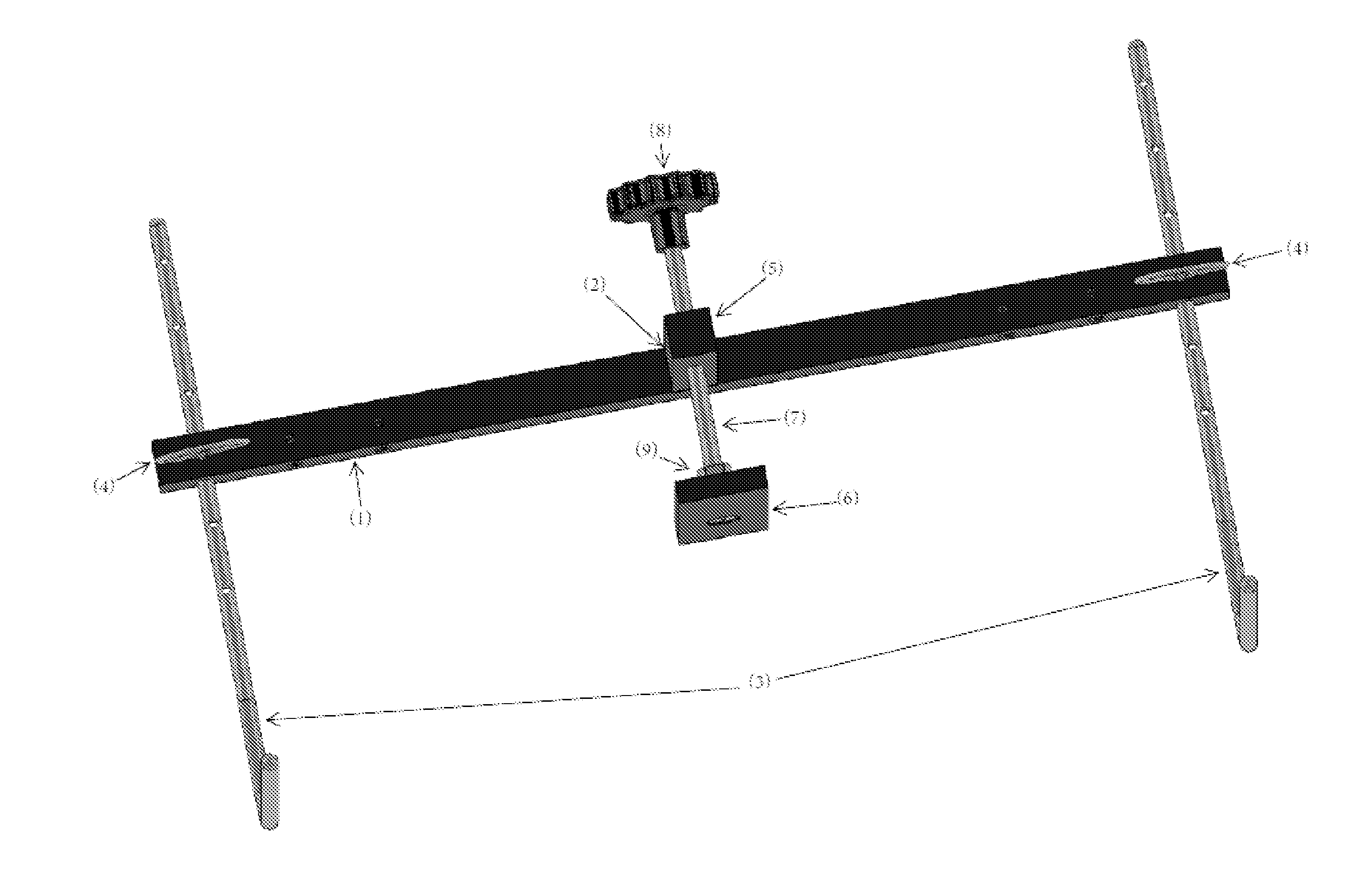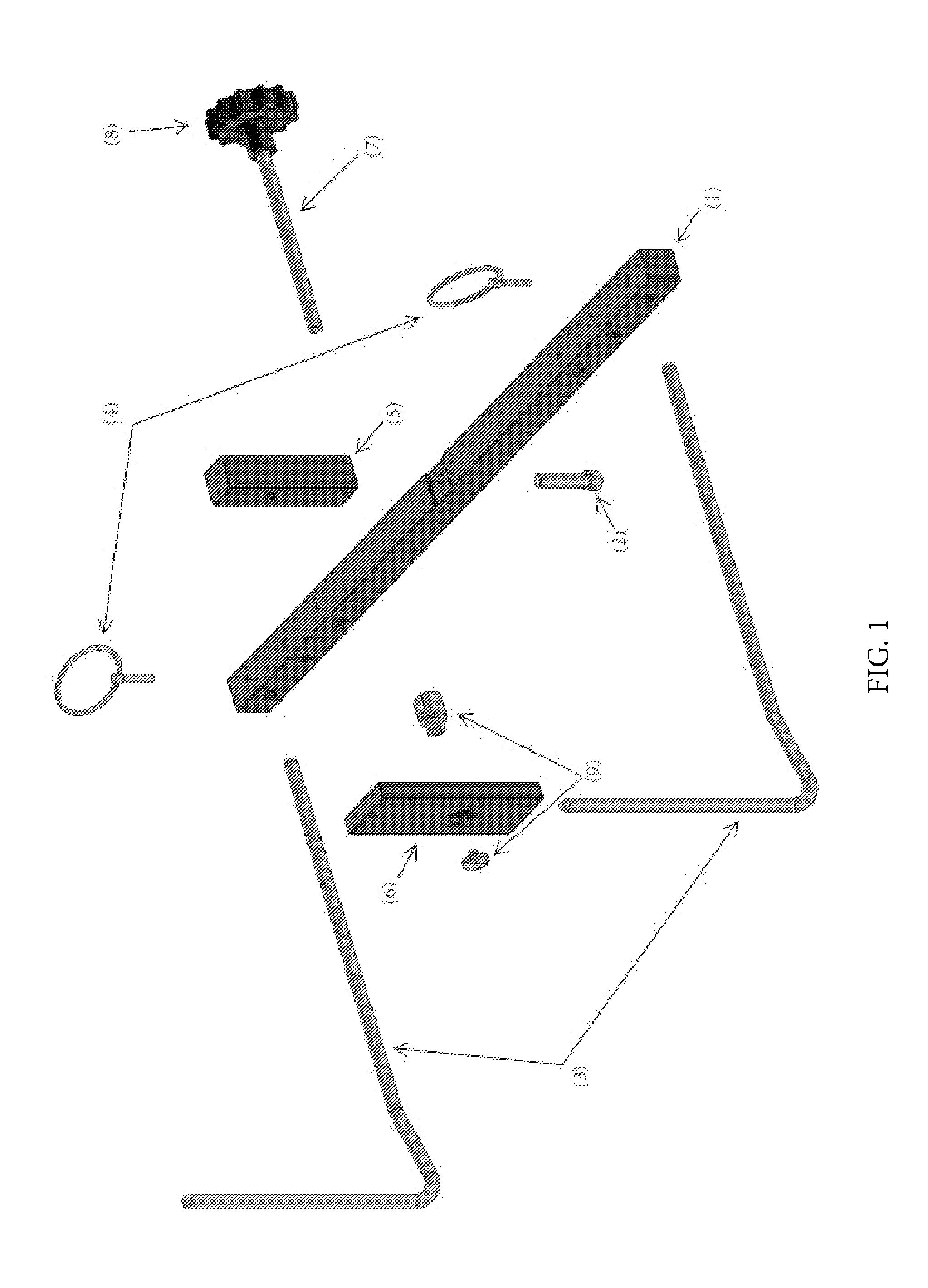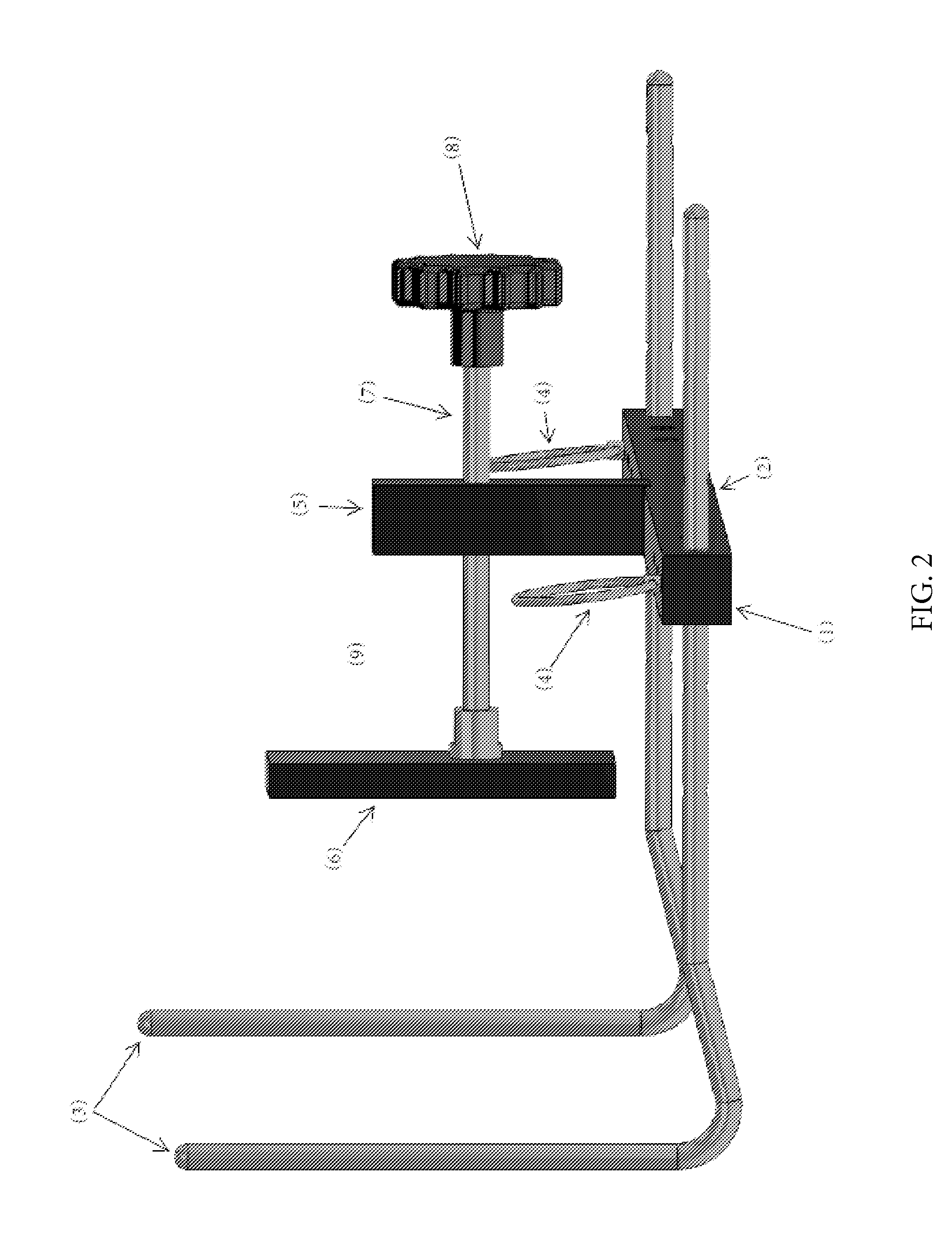Knee Adjustment Device
a technology for adjusting devices and knees, which is applied in the field of kinesitherapy instruments or braces, can solve the problems of altering the alignment of the knee, osteoarthritis or the degeneration of the bones, erosion of the tibia, etc., and achieves the effects of reducing pain and discomfor
- Summary
- Abstract
- Description
- Claims
- Application Information
AI Technical Summary
Benefits of technology
Problems solved by technology
Method used
Image
Examples
Embodiment Construction
[0007]The knee adjustment device, as depicted in FIG. 1, consists of a base bar (1) with adjustment holes; securing bolt(s) (2); two lateral bracing arms (3) with adjustment holes; two ring pins (4); pressure plate stabilizing post (5); pressure plate (6); adjustment bolt (7); adjusting knob (8); and rotating joint coupling (9). The knee adjustment device is adjustable to different widths and lengths of legs with no added components. This one device can fit most individuals.
Description of the Parts:
[0008]Base bar (1) stabilizes the knee adjustment device on the pressure side. The base bar has adjustment holes through which lateral bracing arms slide through for adjusting width and length of the device. This allows it to conform to the size of the individual's leg.[0009]Securing bolt(s) (2) are bolt(s) inserted through the bottom of the base bar and into the pressure plate stabilizing post to securing the pressure plate, thus stabilizing the post to the base bar.[0010]Lateral bracing...
PUM
 Login to View More
Login to View More Abstract
Description
Claims
Application Information
 Login to View More
Login to View More - R&D
- Intellectual Property
- Life Sciences
- Materials
- Tech Scout
- Unparalleled Data Quality
- Higher Quality Content
- 60% Fewer Hallucinations
Browse by: Latest US Patents, China's latest patents, Technical Efficacy Thesaurus, Application Domain, Technology Topic, Popular Technical Reports.
© 2025 PatSnap. All rights reserved.Legal|Privacy policy|Modern Slavery Act Transparency Statement|Sitemap|About US| Contact US: help@patsnap.com



